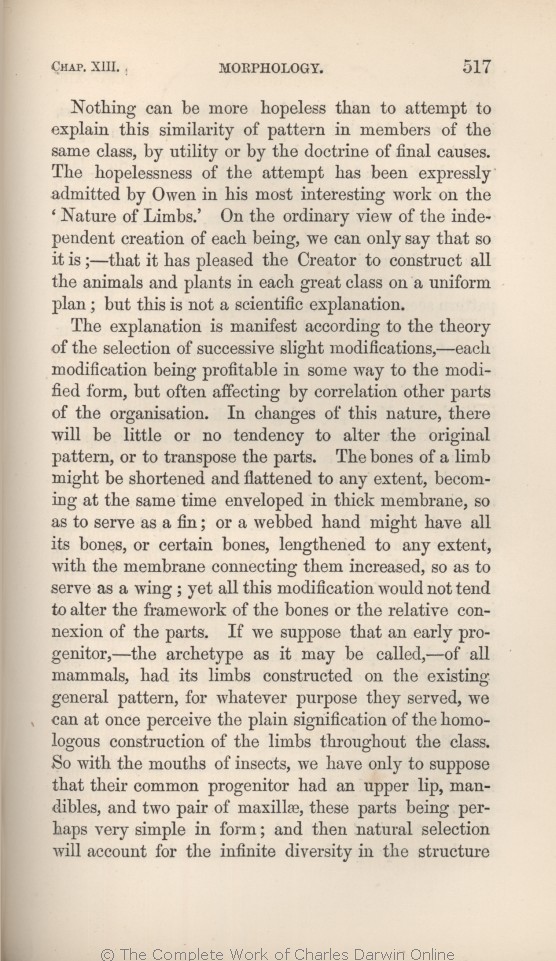The explanation is
manifest | manifest 1859 1860 1861 1866 1869 |
| to a large extent simple 1872 |
| according to 1869 | | on 1859 1860 1861 1866 1872 |
| ..... 1869 1872 | | natural 1859 1860 1861 1866 |
| ..... 1869 1872 | | of growth 1859 1860 1861 1866 |
| alter 1869 1872 | | modify 1859 1860 1861 | | modifiy 1866 |
| the parts. 1869 1872 | | parts. 1859 1860 1861 1866 |
| flattened 1869 1872 | | widened 1859 1860 1861 1866 |
| becoming at the same time 1869 1872 |
| and become gradually 1859 1860 1861 1866 |
| hand 1869 1872 | | foot 1859 1860 1861 1866 |
| bones, 1859 1860 1866 1869 1872 | | bones 1861 |
| with 1869 1872 | | and 1859 1860 1861 1866 |
| increased, 1869 1872 | | increased 1859 1860 1861 1866 |
| OMIT 1869 1872 |
| to any extent, 1859 1860 1861 1866 |
| wing; 1861 1866 1869 1872 | | wing: 1859 1860 |
| ..... 1869 1872 | | in 1859 1860 1861 1866 |
| this modification would not tend 1869 |
| this great amount of modification there will be no tendency 1859 1860 1861 |
| this great amount of modification there would be no tendency 1866 |
| these modifications would not tend 1872 |
| the bones 1866 1869 1872 | | bones 1859 1860 1861 |
| ..... 1869 1872 | | several 1859 1860 1861 1866 |
| an early progenitor,— 1869 |
| the ancient progenitor, 1859 1860 1861 1866 |
| an early progenitor— 1872 |
| called,— 1869 | | called, 1859 1860 1861 1866 | | called— 1872 |
| had 1859 1860 1861 1866 1869 |
| birds, and reptiles, had 1872 |
| ..... 1869 1872 | | whole 1859 1860 1861 1866 |
| pair 1859 1860 1861 1866 1869 | | pairs 1872 |
| selection 1859 1861 1866 1869 1872 | | selection, 1860 |
| will 1859 1861 1866 1869 1872 |
| acting on some originally created form, will 1860 |
| the structure 1869 1872 | | structure 1859 1860 1861 1866 |
|









